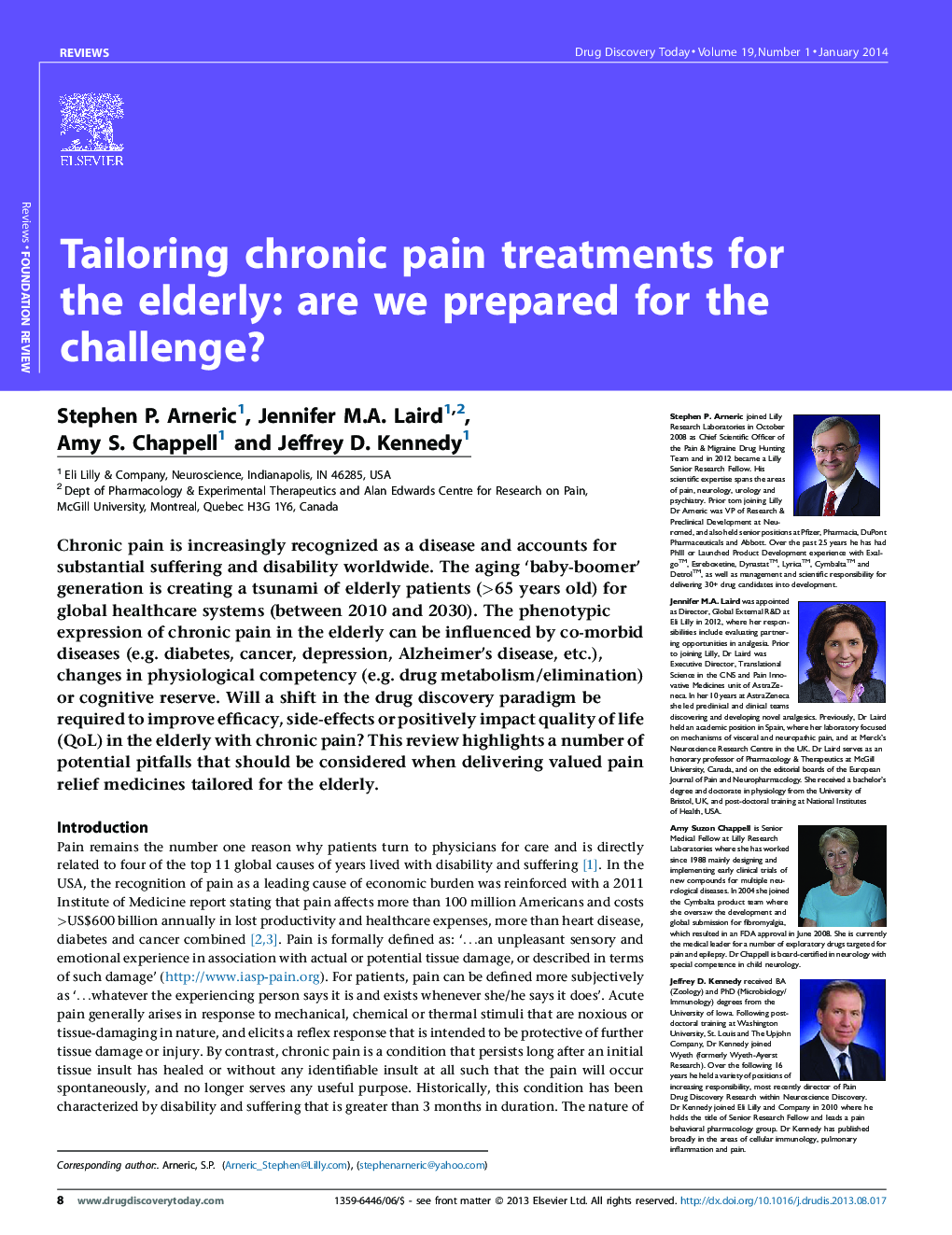| Article ID | Journal | Published Year | Pages | File Type |
|---|---|---|---|---|
| 2080057 | Drug Discovery Today | 2014 | 10 Pages |
•The ‘baby-boomer’ generation will double the elderly population in the USA by 2030.•Aging impacts nociceptive processing in humans and animals models.•Pain management approaches in elderly patients are limited by frailty and quality of life challenges.•Challenges must be met to deliver valued analgesics for the ‘tsunami of elderly’.
Chronic pain is increasingly recognized as a disease and accounts for substantial suffering and disability worldwide. The aging ‘baby-boomer’ generation is creating a tsunami of elderly patients (>65 years old) for global healthcare systems (between 2010 and 2030). The phenotypic expression of chronic pain in the elderly can be influenced by co-morbid diseases (e.g. diabetes, cancer, depression, Alzheimer's disease, etc.), changes in physiological competency (e.g. drug metabolism/elimination) or cognitive reserve. Will a shift in the drug discovery paradigm be required to improve efficacy, side-effects or positively impact quality of life (QoL) in the elderly with chronic pain? This review highlights a number of potential pitfalls that should be considered when delivering valued pain relief medicines tailored for the elderly.
